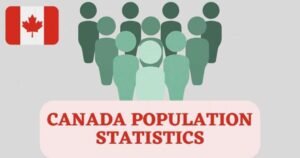Wales, a country within the United Kingdom, is located to the west of England on the island of Great Britain. Known for its rugged coastline, mountainous national parks, and distinct Celtic culture, Wales boasts a rich history dating back to ancient times. The country has a population of around 3.1 million people and is officially bilingual, with both Welsh and English spoken.
Cardiff, the capital and largest city, is a vibrant cultural and economic centre. Wales is renowned for its castles, folklore, music, and festivals, as well as its contributions to literature and the arts. The scenic landscapes, including Snowdonia National Park, offer numerous outdoor activities, making Wales a popular destination for tourists.
Population of Wales
According to the 2021 census released by the Government of Wales, the population of Wales further grew to 3,107,500, which is an increase of 44,044 people from 2011. This translates to a growth rate of 1.4%. Despite the relatively modest growth rate compared to the previous decade, this increase reflects ongoing demographic changes in Wales. The growth can be attributed primarily to positive net migration, as there were more deaths than births during this period. The continuous rise in population underscores the importance of effective urban planning and resource management to accommodate the growing number of residents.
| Year | Population | Population Growth (%) |
|---|---|---|
| 2001 | 2,903,750 | N/A |
| 2011 | 3,063,456 | 5.5 |
| 2021 | 3,107,500 | 1.4 |
- Population Growth Over Two Decades:
- In 2001, the population of Wales was 2,903,750.
- By 2011, the population had increased to 3,063,456, marking a growth of 159,706 people over the ten-year period. This represents a population growth rate of 5.5%.
- In 2021, the population further grew to 3,107,500, which is an increase of 44,044 people from 2011. This translates to a growth rate of 1.4%.
- Comparative Growth Rates:
- The rate of population growth between 2001 and 2011 (5.5%) was significantly higher than the growth rate between 2011 and 2021 (1.4%).
- This indicates a slowing down of population growth in the more recent decade compared to the previous one.
- Population Records:
- The population recorded in 2021 (3,107,500) is the highest ever recorded in Wales through a census.
This data suggests that while Wales has experienced continuous population growth over the past two decades, the rate of this growth has slowed down in the most recent decade. This trend contrasts with the period from 2001 to 2011, which saw a more substantial increase in population size.
| Gender | Population | Percentage (%) |
|---|---|---|
| Women | 1,586,600 | 51.1 |
| Men | 1,521,000 | 48.9 |
In Wales, the population consisted of 1,586,600 women, making up 51.1% of the total, and 1,521,000 men, accounting for 48.9%. The older age groups saw a notable increase, with 21.3% of the population aged 65 years and over, up from 18.4% in 2011.
On Census Day, there were 1,347,100 households with at least one usual resident in Wales, marking a 3.4% rise from 2011 when there were 1,302,676 households.
Current Population of Wales 2024
Three sources—Totalpopulation.co.uk, Ukpopulation.org, and Populationpie.co.uk—provide estimates for the population of Wales in 2024. Each source presents slightly different figures: Totalpopulation.co.uk estimates 3.10 million, Ukpopulation.org estimates 3.30 million, and Populationpie.co.uk estimates 3.13 million.
| SOURCES | CURRENT POPULATION | YEAR |
|---|---|---|
| Totalpopulation.co.uk | 3,105,500 (3.10 M) | 2024 |
| Ukpopulation.org | 3,307,856 (3.30 M) | 2024 |
| Populationpie.co.uk | 3,130,000 (3.13 M) | 2024 |
Variations in estimates can be attributed to differences in data sources, methodologies, and assumptions about population growth and demographic trends. These estimates are crucial for understanding population dynamics and for planning purposes in various sectors.
Demographics of Wales 2024
| Age Group | Population (2021) | Percentage (2021) | Population (2011) | Percentage (2011) |
|---|---|---|---|---|
| Aged 65 years and over | 662,000 | 21.30% | 562,544 | 18.40% |
| Aged 90 years and over | 29,700 | 1.00% | 25,200 | 0.80% |
| Aged 15 to 64 years | 1,931,800 | 62.20% | 1,981,784 | 64.70% |
| Aged under 15 years | 513,800 | 16.50% | 519,128 | 16.90% |
The table provides a snapshot of the age demographics in Wales for the years 2021 and 2011, revealing significant shifts in population distribution over the decade. In 2021, Wales experienced a notable increase in the proportion of elderly individuals, with 21.3% of the population aged 65 years and over, compared to 18.4% in 2011. This ageing trend is further highlighted by the rise in the population aged 90 years and over, from 0.8% in 2011 to 1.0% in 2021, indicating a growing segment of very elderly individuals.
Conversely, the working-age population (aged 15 to 64 years) declined slightly from 64.7% in 2011 to 62.2% in 2021, reflecting a relative decrease in the proportion of individuals of traditional working age. Similarly, the percentage of children under 15 years old decreased from 16.9% in 2011 to 16.5% in 2021, indicating a slight decline in the population of younger age groups.
These demographic shifts have implications for various aspects of society and public policy, such as healthcare, pensions, and workforce planning. The increasing proportion of older adults poses challenges in terms of healthcare demand and pension provision, while the relative decline in the working-age population may impact economic productivity and labour force dynamics. Understanding these demographic changes is crucial for policymakers and planners to effectively address the needs and challenges associated with an ageing population and shifting demographic structure in Wales.
Cardiff Population 2024

According to the 2021 census released by the Office for National Statistics of the Government of Wales, the population of Cardiff further grew to 362,400 which is an increase of 16,310 people from 2011. This translates to a growth rate of 4.70%.
| Year | Population |
|---|---|
| 2011 | 346,090 |
| 2021 | 362,400 |
| Change | 4.70% |
The population changes in Cardiff, the capital city of Wales, over the period from 2011 to 2021. In 2011, Cardiff had a population of 346,090 residents, which increased to 362,400 by 2021.
Cardiff was the most densely populated local authority in Wales, with 2,572 residents per square kilometre, which was more than three times the density of the next highest area, Newport, which had 838 residents per square kilometre. Cardiff had the highest percentage of people aged 15 to 64 years among the areas in Wales, with 68.4%.
The increase in population reflects various factors such as natural population growth (births minus deaths), net migration into the city, and potentially other demographic shifts such as changes in household sizes or age distributions. Cardiff’s growth suggests it is experiencing demographic and possibly economic expansion, which can impact housing demand, infrastructure needs, and local services.
Understanding these population dynamics is crucial for urban planning, resource allocation, and policymaking to ensure that Cardiff continues to accommodate and support its growing population effectively. It also underscores the city’s role as a hub of economic activity and cultural significance within Wales.
Current Population of Cardiff 2024
The table provides population estimates for Cardiff in 2024 sourced from Totalpopulation.co.uk and Ukpopulation.org. According to Totalpopulation.co.uk, the estimated population of Cardiff is approximately 359,500 people, equivalent to 0.36 million.
In contrast, Ukpopulation.org estimates the population slightly higher at around 360,000 individuals, or 0.36 million. These figures reflect the proximity of estimates between the two sources, highlighting Cardiff’s stable population growth and the reliability of multiple data points for understanding demographic trends in the city.
| SOURCES | CURRENT POPULATION | YEAR |
|---|---|---|
| Totalpopulation.co.uk | 359,500 (0.36M) | 2024 |
| Ukpopulation.org | 360,000 (0.36M) | 2024 |
Disclaimer: The data research report we present here is based on information found from various sources. We are not liable for any financial loss, errors, or damages of any kind that may result from the use of the information herein. We acknowledge that though we try to report accurately, we cannot verify the absolute facts of everything that has been represented.








